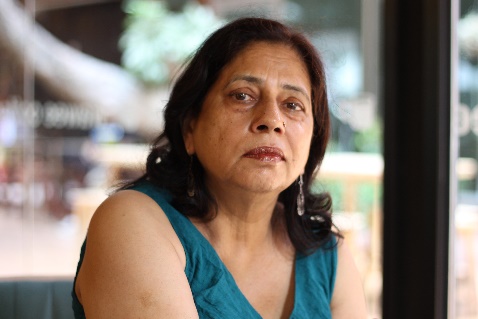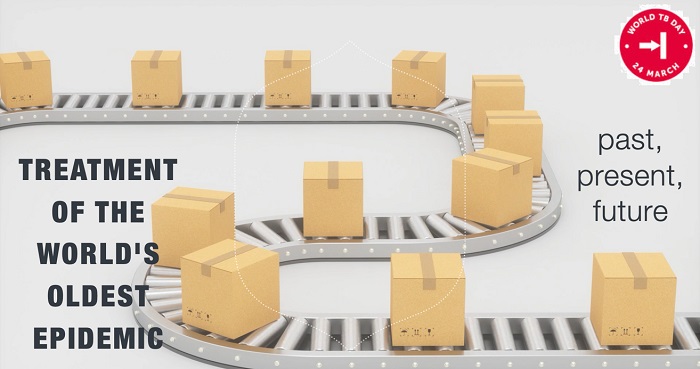


This article is dedicated to all those who lost their lives to world's most deadly infectious disease - TB - and to those who defeated it
Is it not shocking that an ancient disease that has been with human since long before the recorded history, and is preventable and treatable, still kills around 1.5 million people every year? Molecular analysis of causative microbe of tuberculosis (TB) suggests that the first infections of humans occurred as much as 70,000 years ago. But the actual cause of TB was known only 140 years ago, when on March 24, 1882, Dr Robert Koch announced his discovery of Mycobacterium - the microbe that causes TB. Even today, TB remains the leading infectious cause of death globally. 1.8 billion people (nearly 25% of the world’s population), harbour Mycobacterium tuberculosis. Every year nearly 10 million people contract the disease and around 1.5 million die from it.
same disease, but many names
In the past, this debilitating disease has been known by many names- like consumption, phthisis, white plague, king’s evil, etc, till in 1834, a German physician Johann Schonlein coined the term 'tuberculosis'. Many eminent personalities have succumbed to it- King Edward VI of England, King Louis XIII of France, poet John Keats, music composer Frédéric Chopin, writers like Emilie Bronte, Jane Austen, Moliere, Chekhov, Maxim Gorky, Khalil Gibran and George Orwell, educator Louis Braille, USA’s longest serving first lady Eleanor Roosevelt, India’s first female doctor Anandi Gopal Joshi- to name just a few.
Drug resistance is among the challenges threatening to reverse the gains made in fight against TB
In the decades following Koch’s discovery, the BCG (Bacillus Calmette-Guerin) vaccine, antibiotic streptomycin, and other anti-TB drugs were developed. While the BCG vaccine, made 100 years ago in 1921 does protect children from severe forms of TB, especially TB meningitis, it has little or no effect in preventing TB in adults. In 1944 streptomycin, the first antibiotic against TB was discovered by Selman Wakman. It literally brought patients with TB meningitis (for which there had been no cure at that time) ‘back to life’. But very soon it also led to the emergence of streptomycin-resistant TB bacilli. In the following years many other anti-TB drugs were developed and combinations of antibiotics were used to treat patients. But resistance to many anti-TB drugs has emerged and drug-resistant forms of TB are now a major problem globally.
Treatment of drug-sensitive TB
When TB bacteria responds to the anti-TB medicines and has not developed resistance to them, then it is referred to as drug-sensitive TB. And when TB bacteria has developed resistance against anti-TB medicine(s) then the disease is referred to as drug-resistant TB.
The current short-course of 6 months drug-sensitive TB treatment consisting of Isoniazid (H), Rifampin (R), Pyrazinamide (Z), and Ethambutol (E), has been in use since the 1980s. We seem to have got stuck for quite a long time with this ‘one size fits all’ regimen (of 2 months of intensive-phase treatment with HRZE and 4 months of continuation phase with HR). However, in the last 18 months or so, there has been a lot of progress for treatment of drug-sensitive TB, as shared by Dr Susan Dorman at Conference on Retroviruses and Opportunistic Infections (CROI 2022).
Dr Susan Dorman is an infectious disease expert at the Medical University of South Carolina. We now have a 4-months treatment for drug-sensitive TB of lungs for adults and adolescents. This is Isoniazid (H), Rifapentine (P), Moxifloxacin (M), and Pyrazinamide (Z) regimen (2HPZM/ 2HPM).
Dr Dorman said that we also have a 4-months Isoniazid (H), Rifampicin (R), Ethambutol (E), and Pyrazinamide (Z) regimen (2HRZE/2HR) for children with non-severe drug-sensitive TB of the lungs.
"But these shorter regimens are certainly not the end. We need to shift to a more individualised approach to TB treatment, optimise existing TB drugs and repurposed antibiotics, use novel drugs/ regimens and understand how host-directed therapies can improve TB treatment, and reduce patients’ burden through better adherence and monitoring strategies,” said Dr Dorman, while highlighting the recent advancements in these areas.
The TRUNCATE-TB study aims to examine 4 different optimised regimens for an ultra-short treatment (2 months duration) of drug-sensitive TB of the lungs. These 4 regimens are of:
- Isoniazid, Pyrazinamide, Ethambutol, Linezolid and Rifampin
- Isoniazid, Pyrazinamide, Ethambutol, Clofazimine and Rifampin
- Isoniazid, Pyrazinamide, Linezolid, Rifapentine, Levofloxacin; and
- Isoniazid, Pyrazinamide, Ethambutol, Linezolid, Bedaquiline.
There are other ongoing studies examining various host-directed therapies that augment human host immune responses and thereby shorten therapy and reduce risk of relapse or subsequent lung damage. One such study being done by Aurum Institute in South Africa is examining the use of immune modulators like CC-11050, Everolimus, Auranofin, Ergocalciferol along with standard TB treatment to mitigate destructive inflammatory responses in HIV negative adults with drug-sensitive TB of the lungs. CC-11050 and Everolimus have been found to improve lung function outcomes at day-180 relative to the control group.
Treatment of multi-drug resistant TB (MDR-TB)
Dr David Moore, Professor of infectious diseases at the London School of Hygiene and Tropical Medicine shared at CROI 2022 the recent advancements made in the treatment of MDR-TB treatment. Until recently, the standard MDR-TB treatment that gave a cure of 50%, was a minimum of 18-months duration with highly toxic drugs and painful daily injections given for a minimum of the first 6-months of treatment.
Now we have an all-oral short-course 6-months treatment regimen for MDR-TB. This regimen is of Bedaquiline, Pretomanid and Linezolid (BPaL). Nix-TB and ZeNix studies by TB Alliance have assessed the safety and efficacy of the BPaL regimen in participants with pulmonary extensively drug-resistant TB (XDR-TB) or treatment intolerant/ non responsive MDR-TB, and shown favourable treatment outcomes in 90% of the patients, paving the way for shorter and more efficacious treatment regimens for MDR/ XDR-TB.
TB PRACTECAL study led by MSF is evaluating 6-months treatment regimens containing Bedaquiline (B) and Pretomanid (Pa) in combination with existing and re-purposed anti-TB drugs - Linezolid (L), Moxifloxacin (M) and Clofazimine (C).
The study design has 4 arms:
- the control arm is the WHO standard of care regimen;
- BPaLM arm;
- BPaLC arm; and
- BPaL arm.
As of now, BPaLM regimen has been found to be non-inferior to the standard of care (9-24 months) treatment of rifampicin-resistant TB of the lungs. Outcomes of other regimens are expected to be reported soon, shared Dr Moore who is also a member of the TB PRACTECAL Trial Steering Committee.
TB Preventive Treatment (TPT) for MDR-TB
A person with latent TB (or latent drug-resistant TB) infection does not have symptoms and cannot spread TB bacteria to others. But in some of them the latent TB infection will progress to active TB disease in their life. All cases of active TB come from this pool of people with latent TB infection. That is why it is important to correctly diagnose those with latent TB infection and provide TB preventive treatment to them so that their risk of progressing to active TB disease is decimated.
Many ongoing studies are evaluating 6-months MDR-TB preventive therapies for close contacts of MDR-TB patients:
-- TB CHAMP study is examining Levofloxacin as MDR-TB preventive therapy in children under the age of 5 years who are close contacts of adults diagnosed with MDR-TB.
-- PHOENix (Protecting Households On Exposure to Newly Diagnosed Index Multidrug-Resistant Tuberculosis Patients) is a multi-country study comparing Delamanid with Isoniazid for preventing MDR-TB in children, adolescents and adults who are close contacts of persons with MDR-TB.
-- V-QUIN study in Vietnam is examining the efficacy of Levofloxacin for treating latent MDR-TB in all household contacts of patients with bacteriologically-confirmed Rifampicin-resistant TB.
New drugs, including long acting injectables:
At CROI 2022, Dr Eric Nuermberger of Johns Hopkins University School of Medicine, shared that there are 15 new anti-TB drugs in different stages of development, 9 of which target 6 novel mechanisms of action, and 6 are the next generation drugs, most of which target a pathway that has already been validated by other effective TB drugs.
TBAJ-876, a next generation diarylquinoline, which is in phase-1 of multiple ascending dose (MAD) study has shown improved safety, improved pharmacokinetics and superior potency. Sutezolid and Delpazolid are new oxazolidinones in phase 2b/2c studies.
DprE1 inhibitors that represent a novel class of anti-TB agents are also being developed. OPC-167832, in combination with Bedaquiline and Delamanid, is being evaluated for safety and efficacy of a 4-months regimen for drug-sensitive TB. GSK3036656, a novel translational inhibitor, has been found to be safe and well tolerated after single and multiple doses in its First-Time-in-Human Study. It is a promising anti-TB agent for further clinical development with a novel mechanism of action and with a shorter duration of treatment.
Long acting injectable formulations of TB drugs have several potential benefits for TB therapy by way of improved adherence, greater acceptability, and better integration of TB preventive therapy into other treatment programmes, like those for HIV, maternal and child health. There are existing TB drugs that could be potential suitable candidates for long acting injectable formulations, said Dr Nuermberger.
One single dose of long acting formulation of Bedaquiline was found to maintain drug and metabolite concentration for upto 3 months in mice. Early modelling results support the idea that this would also be observed in the clinic. New diarylquinolines (like TBAJ-876) may be good candidates for long acting based TB preventive therapy. In fact, the University of Liverpool University’s LONGEVITY project is developing long acting injectable formulations of existing oral drugs for TB prevention.
Indeed, as the theme of World TB Day 2022 says, we must ’Invest to End TB. Save Lives’ and ensure equitable access to TB prevention and care in line with achieving Universal Health Coverage.
(Shobha Shukla is the award-winning founding Managing Editor and Executive Director of CNS (Citizen News Service) and is a feminist, health and development justice advocate. She is a former senior Physics faculty of prestigious Loreto Convent College and current Coordinator of Asia Pacific Regional Media Alliance for Health and Development (APCAT Media). Follow her on Twitter @shobha1shukla or read her writings here www.bit.ly/ShobhaShukla)